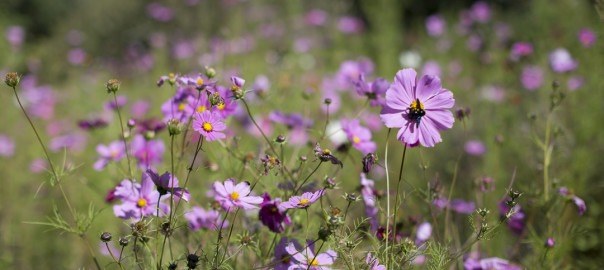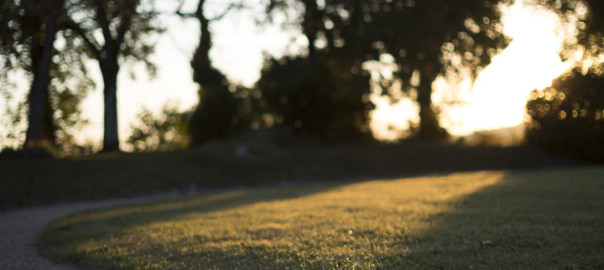Last week my daughter and I were spring cleaning the downstairs floor of our house. The place is big, made of five-centuries-old stone walls and oak beams, so months of accumulated dust, fuzz, wood particles, cobwebs, bat droppings and other curious signs of decay can be intimidating. As we were moving from corner to corner, I was enjoying her increasingly serene attitude, which spontaneously evoked a short story I had read when I was her age but hadn’t thought of for years (whose title and author I cannot recall).
In the story, an older woman offers to pay a teenage boy from next door to cut her lawn once a week. He agrees, and she shows him the various tools he’ll need – a manual push reel mower (perhaps some of you can recall these; they have a rotating cylinder of blades that move as fast as you push the thing, making a very satisfying signature sound and sensation as you go), hand-held garden weeder, lawn edger and grass shears. She mentions that she’ll pay him between $3 and $5 each week, depending on the quality of his work: $3 for a good job, $4 for excellent and $5 for impeccable. And that he should set the price depending on how well of a job he believed he had done. Anyway, months go by and the story mainly chronicles the boy’s reflections and considerations during and around his lawn cutting until his final success in being paid $5.
I still think I’ve never read a better crafted subtle introduction to the idea of serene fulfillment in meticulous accomplishment. What begins as a boy struggling between his lazy sloppiness and his ambition for achievement slowly pivots into the wonders of losing oneself in attention to detail. Relaxing into the certain specific speed in pushing the mower to get perfectly cut lines; losing track of time while crawling on hands and knees hunting weeds; surrendering into awkward, uncomfortable yoga-like positions necessary for superior placement and angle; forgetting everything else while watching blades of grass arc up and over the shears with each quick snip …
I recall my intrigue and even natural impulses in this direction at the time, although these were always suffocating under the manic “Get it done and get it done now” demand in virtually every arena of my life, from school to sports to work and everything else. It took me probably another ten years before I had collected enough accidental experiences of falling into the moment to begin to really take the idea seriously. Or maybe not even the idea, but the value of the experience.
In fact, actual experiences of this kind were almost always born from rudimentary, initially boring activities. And the process or labyrinth to go through before finding them was the same each time: nervously irritable anticipation, anxiously staring at the goal as if it were the promise of release from prison, tensely accelerated effort to get there faster…before initial hints of relief through thoughtless repetition over time…and the slowly guiding sensations of mind and emotions acquiescing to the actual flow of reality, gradually leading to, opening into extended moments of effortless perfection.
I say perfection because it is only within such moments that everything imperfect disappears, leaving just stripped-down absolute harmony. Past and future, and all their accoutrements (worry, struggle, expectation, desire, ambition, discontentment, nagging strategies, anxiety…) vanish. And one is left empty, with nothing except a fluid open sensation, similar to becoming the sound from a tuning fork piercing through space.
Having studied for decades the history and techniques of various cults of serenity, I’ve been able to gradually construct a viable philosophy around these experiences. Or, perhaps more accurately, convince my mind that they should be prioritized even though there are a lot of other conflicting, important things to do. Looking back on that long road of self-convincing, though, it seems like what I learned was as much a hindrance as a help. For one, I could never completely buy the worth of pursuing serene fulfillment, which in itself feels like just a more sophisticated form of groping for self-gratification. But falling into it through full attentiveness to labor in the moment has always felt sane, clean, natural. Recognizing actual value, knowing where such experiences fit within the hierarchy of possible human experiences, has come mostly through witnessing the downfall of other experiences relative to my original hopes and expectations I placed upon them. (Values mostly evolve through erosion, and suffering through it.) I stumbled upon all the obvious clues when I was child, but it just seemed too simple and ignored by others to take seriously.
What draws me now to this line of contemplation is the remarkably deceptive accessibility to such magical moments. They’re really quite easy to find. It can sound intimidating: the organic integration of unselfconscious meticulousness for its own sake – perfection as a state of grace – into consummate resolution through accomplishment from that – creation of beauty. It might take a while to familiarize oneself with the subtleties of these two, redefine them through observation and experience, perceive the difference between the real thing and sexy bogus imitations. And even more time and erosion to give in to the process of valuing them enough to be guided by and toward them. But it’s not that hard to find a dirty corner somewhere to start.
© 2016 Darrell Calkins

